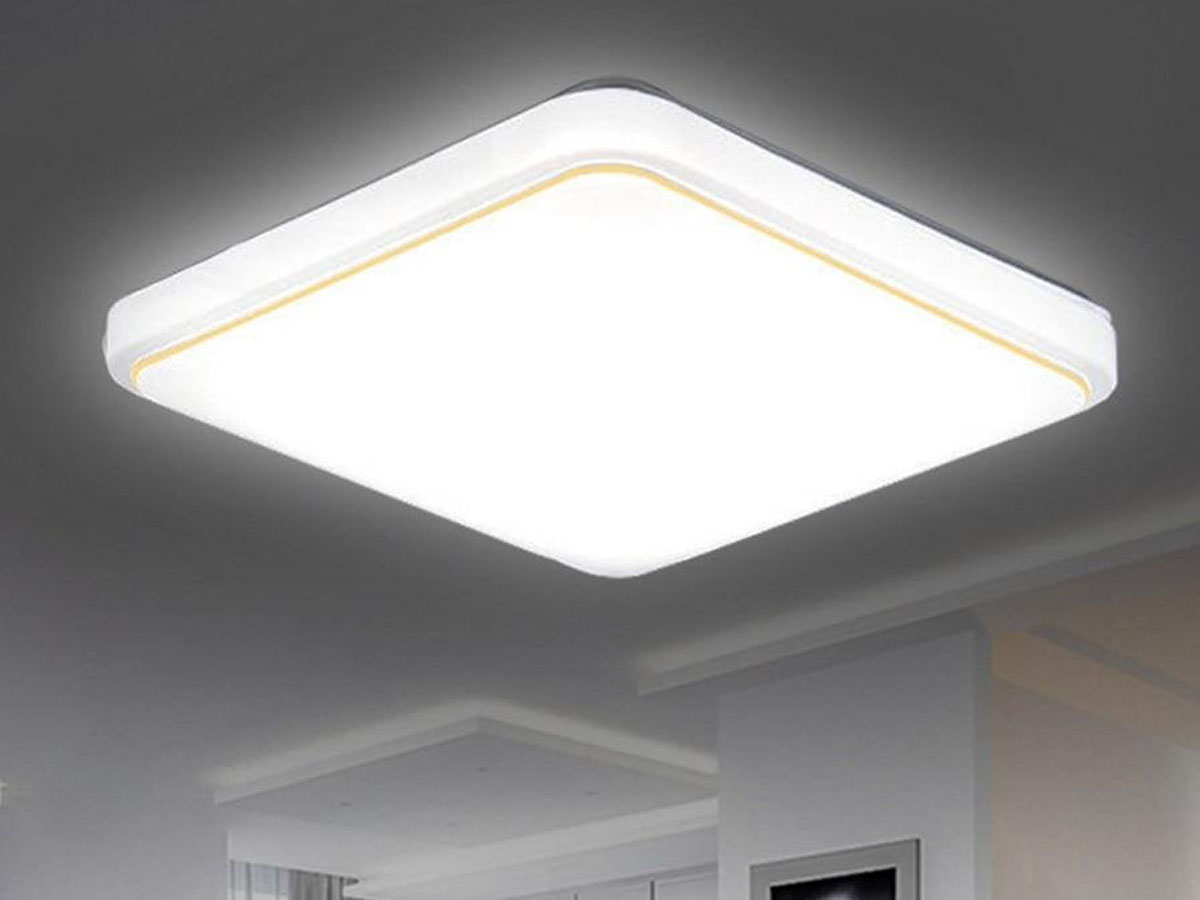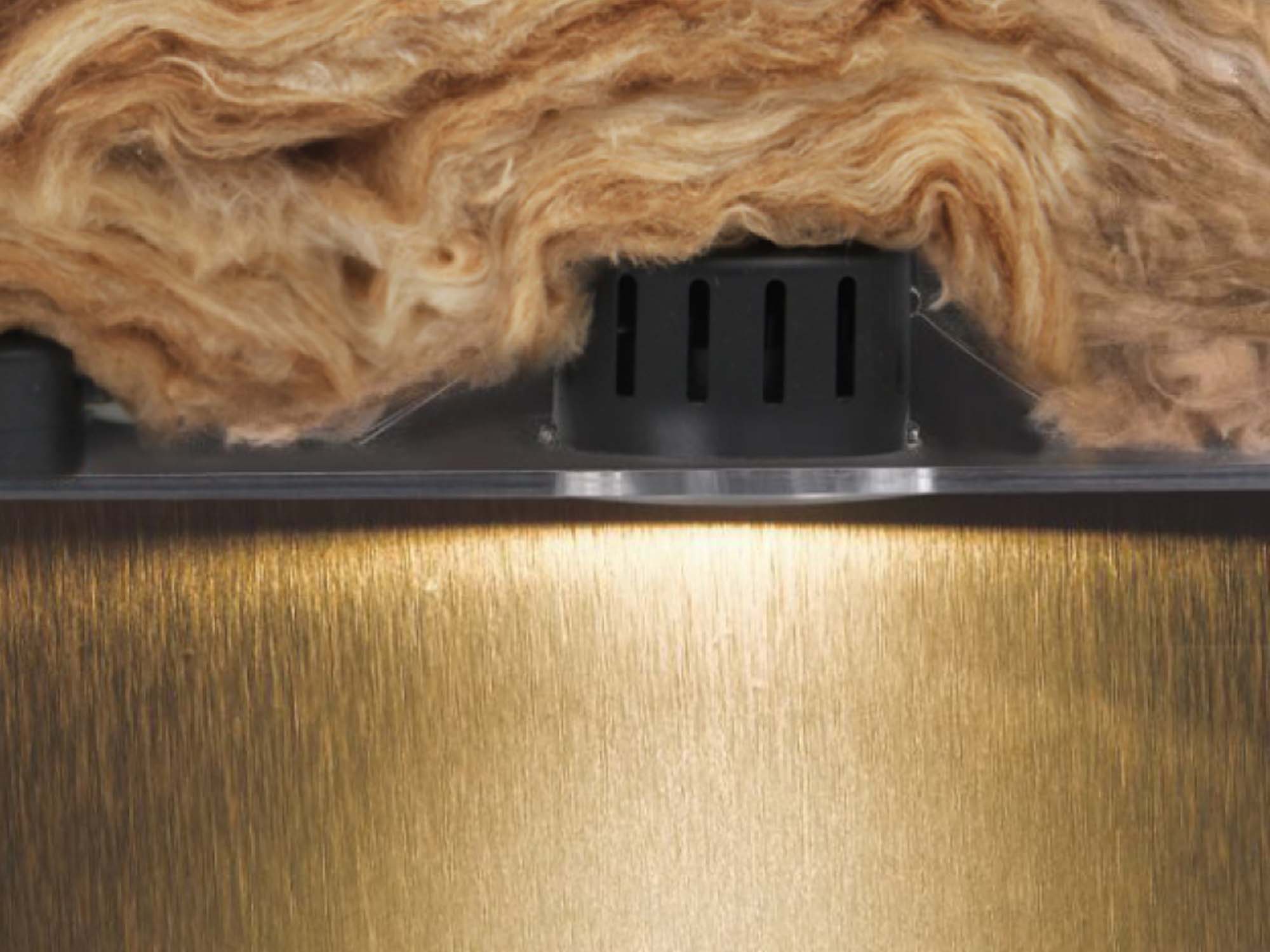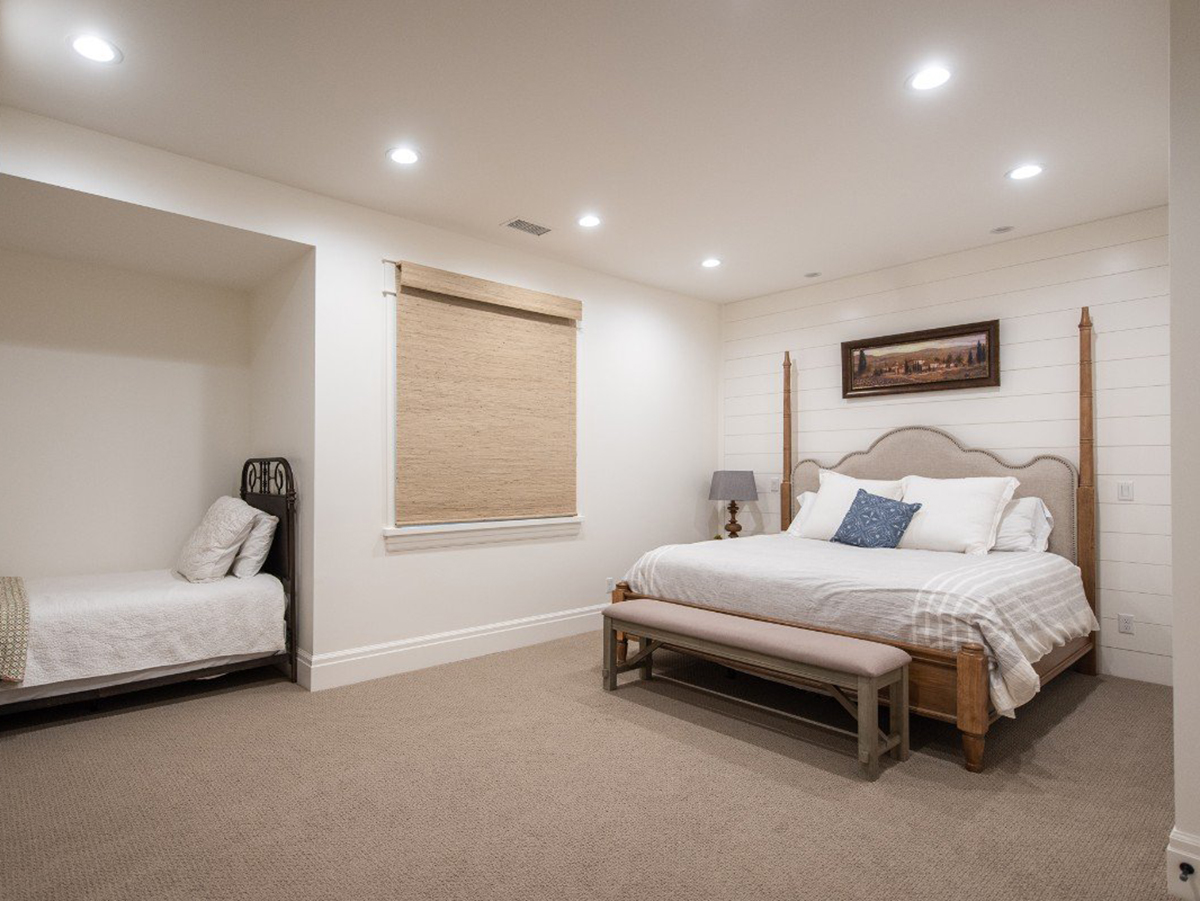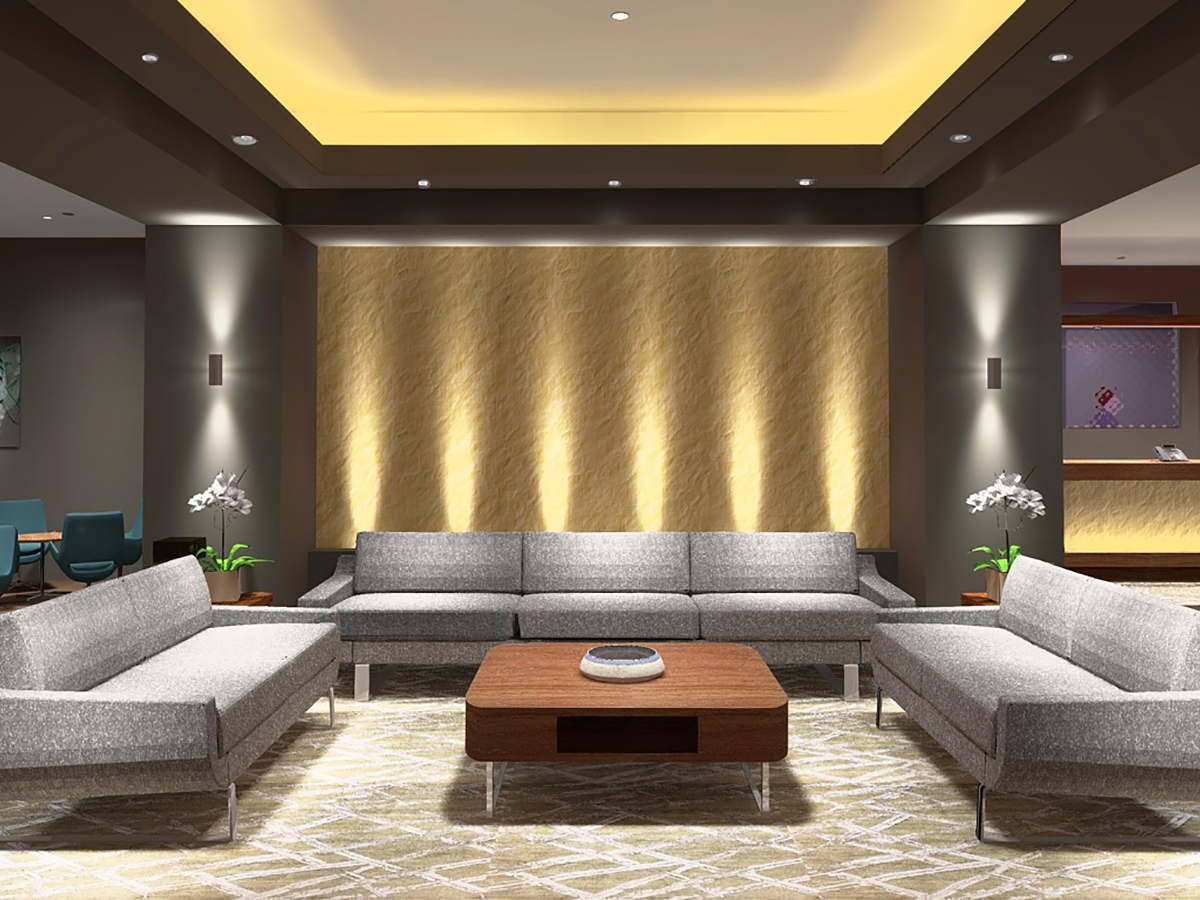Ceiling spotlights have become increasingly popular in modern interior design due to their ability to provide focused and efficient lighting while maintaining a sleek and unobtrusive appearance. These versatile lighting fixtures offer numerous benefits over regular ceiling lights, making them an excellent choice for various spaces.
In this post, let reveal the seceret of the ceiling spotlights.
In this post, let reveal the seceret of the ceiling spotlights.
What Are Ceiling Spotlights?
Ceiling spotlights are a type of lighting fixture that is installed on or recessed into the ceiling of a room. They are designed to direct a focused beam of light in a specific direction, typically used to illuminate specific areas or objects within a space. These spotlights are commonly used in both residential and commercial settings due to their versatility and ability to provide targeted lighting.
The construction of ceiling spotlights usually includes a housing, which can be surface-mounted or recessed into the ceiling, and a light source such as an LED or halogen bulb. The housing helps to protect and contain the electrical components of the spotlight. The light source may be adjustable, allowing users to control the direction of the light and focus it on different areas as needed.
The construction of ceiling spotlights usually includes a housing, which can be surface-mounted or recessed into the ceiling, and a light source such as an LED or halogen bulb. The housing helps to protect and contain the electrical components of the spotlight. The light source may be adjustable, allowing users to control the direction of the light and focus it on different areas as needed.
What are the Application of Ceiling Spotlights?
Ceiling spotlights can be used for various purposes, such as accent lighting to highlight specific artwork, furniture, or architectural features, task lighting for activities that require focused illumination (e.g., reading, cooking), or general ambient lighting to brighten up the entire room. Additionally, they are often used in combination with other types of lighting fixtures, such as pendant lights or chandeliers, to create a layered and balanced lighting scheme.
How Do They Differ from Regular Ceiling Lights?
Ceiling spotlights differ from regular ceiling lights in several ways:
●Direction of Light
The most significant difference between the two is the direction of light they provide. Regular ceiling lights, such as flush-mount fixtures or chandeliers, emit light in all directions, illuminating the entire room evenly.
In contrast, ceiling spotlights are designed to direct light in a focused beam or narrow-angle, allowing for targeted illumination of specific areas or objects.
In contrast, ceiling spotlights are designed to direct light in a focused beam or narrow-angle, allowing for targeted illumination of specific areas or objects.
●Flexibility and Adjustability
Ceiling spotlights often offer greater flexibility and adjustability. They can typically be swiveled or tilted to change the direction of the light beam.
This adjustability makes them versatile for highlighting different features or adjusting the lighting as needed for specific tasks or purposes. Regular ceiling lights usually lack this feature and provide fixed illumination.
This adjustability makes them versatile for highlighting different features or adjusting the lighting as needed for specific tasks or purposes. Regular ceiling lights usually lack this feature and provide fixed illumination.
●Aesthetic and Space
Regular ceiling lights, especially chandeliers and pendant lights, are often more decorative and can be a centerpiece in a room. They come in various styles, designs, and sizes, serving not just as functional lighting but also as decorative elements.
Ceiling spotlights, on the other hand, are more discreet and tend to blend into the ceiling, providing a minimalist and modern look. They are especially suitable for spaces where a less intrusive lighting solution is desired.
Ceiling spotlights, on the other hand, are more discreet and tend to blend into the ceiling, providing a minimalist and modern look. They are especially suitable for spaces where a less intrusive lighting solution is desired.
●Light Distribution
Regular ceiling lights distribute light evenly throughout the room, providing general ambient lighting. They are ideal for creating a well-lit space without specific focal points.
Ceiling spotlights, on the other hand, create localized illumination, making them perfect for accenting certain areas or creating task-specific lighting.
Ceiling spotlights, on the other hand, create localized illumination, making them perfect for accenting certain areas or creating task-specific lighting.
●Purpose
Regular ceiling lights are well-suited for lighting up larger areas or entire rooms and are often used as the primary light source in a space.
Ceiling spotlights, due to their focused and directional nature, are typically used to complement regular ceiling lights or to serve specific lighting purposes, such as highlighting artwork, illuminating workspaces, or adding drama to architectural features.
In summary, while both regular ceiling lights and ceiling spotlights provide illumination from the ceiling, they differ in their direction of light, adjustability, aesthetic appeal, light distribution, and intended use. Ceiling spotlights offer more targeted and versatile lighting options, whereas regular ceiling lights serve as general and often decorative lighting solutions for larger spaces. The choice between the two depends on the specific lighting needs and design preferences of the room or space.
Ceiling spotlights, due to their focused and directional nature, are typically used to complement regular ceiling lights or to serve specific lighting purposes, such as highlighting artwork, illuminating workspaces, or adding drama to architectural features.
In summary, while both regular ceiling lights and ceiling spotlights provide illumination from the ceiling, they differ in their direction of light, adjustability, aesthetic appeal, light distribution, and intended use. Ceiling spotlights offer more targeted and versatile lighting options, whereas regular ceiling lights serve as general and often decorative lighting solutions for larger spaces. The choice between the two depends on the specific lighting needs and design preferences of the room or space.
Are Ceiling Spotlights Suitable for All Types of Ceilings?
Ceiling spotlights can be suitable for most types of ceilings, but their installation and compatibility may vary depending on the ceiling structure and material. Here are some common types of ceilings and considerations for using ceiling spotlights:
●Standard Flat Ceilings
Ceiling spotlights are most commonly used on standard flat ceilings. They can be installed either as surface-mounted fixtures or recessed into the ceiling. Recessed spotlights are a popular choice for their sleek and unobtrusive appearance.
●Sloped Ceilings
For sloped or vaulted ceilings, special adjustable spotlights are available. These spotlights come with swivel brackets or gimbal rings that allow the light fixture to be adjusted to the angle of the ceiling, ensuring the light is directed properly.
●Drop Ceilings
Drop ceilings, also known as suspended ceilings, have a grid-like framework with ceiling tiles resting on it. Ceiling spotlights can be installed on drop ceilings using special mounting brackets or clips. Recessed spotlights might not be suitable for drop ceilings with limited space between the ceiling and the floor above.
●Textured or Popcorn Ceilings
Textured or popcorn ceilings may pose challenges for recessed spotlights. The uneven surface can make it difficult to achieve a clean and secure installation. In such cases, surface-mounted spotlights or track lighting may be more appropriate.
●Plaster or Plasterboard Ceilings
Ceiling spotlights can be installed on plaster or plasterboard ceilings. Recessed spotlights might require additional support, such as plasterboard support boxes, to ensure proper installation.
●Wooden or Exposed Beam Ceilings
For wooden or exposed beam ceilings, surface-mounted spotlights or track lighting can be a suitable option. Recessed spotlights can be more challenging to install in these types of ceilings due to the structural elements.
●High Ceilings
In rooms with high ceilings, ceiling spotlights can be an effective way to provide focused lighting on specific areas or objects without overwhelming the space with too many fixtures.
Are Ceiling Spotlights Dimmable?
Yes, many ceiling spotlights are dimmable. Dimmable ceiling spotlights are designed to work with dimmer switches, allowing you to adjust the brightness of the lights according to your preference and lighting needs. This feature offers greater control over the ambiance and mood of a room, making it more versatile for various activities or occasions.
Dimmable ceiling spotlights usually use compatible dimmable light bulbs, such as dimmable LED or halogen bulbs. These bulbs are specifically designed to be compatible with dimmer switches, enabling smooth and consistent dimming without flickering or other issues.
Dimmable ceiling spotlights usually use compatible dimmable light bulbs, such as dimmable LED or halogen bulbs. These bulbs are specifically designed to be compatible with dimmer switches, enabling smooth and consistent dimming without flickering or other issues.
Conclusion
Ceiling spotlights have proven to be a practical and stylish lighting solution for a wide range of spaces. Their ability to provide focused and adjustable lighting sets them apart from regular ceiling lights, making them perfect for accentuating specific features or creating task-oriented illumination.
From modern living rooms to sophisticated office spaces, ceiling spotlights offer endless possibilities to enhance the aesthetics and functionality of any room.
From modern living rooms to sophisticated office spaces, ceiling spotlights offer endless possibilities to enhance the aesthetics and functionality of any room.


.jpg)



